Do you have a question about the Winnebago Cambria and is the answer not in the manual?
Provides an overview of the operator's manual content and purpose.
Explains safety alerts like Danger, Warning, Caution, and Note used throughout the manual.
Details the contents of the Owner InfoCase for warranty and operation instructions.
Refers to the separate manual for chassis operation and maintenance.
Outlines the dealer's responsibility for pre-delivery inspection and road testing.
Recommends checking and adjusting alignment after loading and periodically.
Guides owners on obtaining dealer support and warranty repairs.
Instructs owners on reporting vehicle safety defects to NHTSA and Winnebago.
Explains the data on the certification label for vehicle identification and weight.
Provides detailed specifications for different models' bodies and chassis.
Lists the capacities for various tanks including fuel, LP gas, fresh water, and holding tanks.
Fields for owner's contact details and vehicle information.
Fields for dealer and service center contact information.
Outlines the warranty coverage, period, and responsibilities of the owner and manufacturer.
Lists general safety precautions for operating the vehicle and its components.
Provides essential driving safety tips and precautions.
Warns about formaldehyde emissions from components and potential health effects.
Explains the function and location of the LP gas leak detector.
Warns about carbon monoxide from exhaust gases and engine operation.
Describes the CO alarm, its location, power, and detection capabilities.
Details the smoke alarm's location, power source, and testing requirements.
Locates the fire extinguisher and recommends monthly inspection and proper charge.
Explains the operation of the escape window and slider windows as exits.
Recommends professional road service for tire changes and cautions about jacking.
Instructs on actions to take if the engine overheats and to consult chassis manual.
Discusses managing condensation and humidity during extended stays.
Details seat adjustment for driver and co-pilot for individual preference.
Emphasizes proper use and care of seat belts for passenger safety.
Advises on the proper selection, installation, and use of child restraint systems.
Explains the function of the keyless entry system for doors.
Guides on adjusting exterior mirrors for maximum rear visibility.
Refers to Owner InfoCase for instructions on the optional rearview system.
Describes the function of the battery boost switch for starting.
Introduces the in-dash radio system and refers to the manual for operation.
Refers to chassis operating guide and warns against hot-wiring.
Guides on checking fluid levels and using the correct coolant type.
Stresses using correct tire size/ply rating and checking pressure.
Explains the importance of alignment and balance for tire wear and handling.
Details checking and adjusting air bag pressure for ride quality.
Recommends checking exterior lights, fuses, and wiring.
Refers to the chassis owner's manual for fuse and breaker information.
Advises on distributing cargo weight according to GVWR and GAWR.
Specifies weight limits for roof carrying capacity in motion and stationary.
Guides on using commercial scales to determine vehicle weight distribution.
Provides hitch capacity, tongue weight, and towing guidelines.
Explains the 7-pin connector for trailer lights and brake controller provision.
Defines GVWR, GAWR, GCWR, and hitch ratings with state regulations.
Offers techniques for climbing and descending hills safely.
Shows typical locations for storing tools and the roof ladder extension.
Provides step-by-step instructions for using the ladder extension.
Advises on ensuring compartment doors are properly latched for seal.
Details refrigerator operation modes (AC electric, LP gas) and leveling.
Explains how to access the exterior compartment for service.
Describes the range top operation on LP gas and avoiding asphyxiation.
Refers to Owner InfoCase for operation and cautions for the optional range and oven.
Refers to Owner InfoCase for complete operating instructions.
Explains the function of the range hood and instructions for bulb/filter replacement.
Details how to operate the range hood light and fan.
Explains the panel for checking battery, tank levels, and operating systems.
Describes how to read tank levels on the monitor panel.
Provides instructions for starting up and shutting down the LP gas furnace.
Explains the operation and efficiency of the optional heat pump system.
Notes on ceiling registers, closing vents, and cycle protection.
Details system functions based on thermostat and fan speed switch positions.
Guides on operation, safety warnings, and the "Pilot Out" indicator.
Explains potential weeping from the valve and how to replace the air gap.
Describes the by-pass valve function for winterization.
Provides instructions for extending and retracting the manual entrance step.
Explains automatic and stationary modes for the electric entrance step.
Guides on operating horizontal and vertical slider windows.
Details the LP gas system's function and types of LP gas.
Explains LP gas properties and its transition from liquid to vapor.
Describes the horizontally mounted LP tank and its components.
Instructs on refilling the permanently mounted LP tank at a dealership.
Discusses issues caused by air in the LP tank and purging.
Lists precautions for safe LP gas system operation and safety devices.
Covers warnings like not tampering with the system and checking for leaks.
Provides procedures for handling LP gas leaks and warnings.
Explains the pressure regulator's function, protection, and inspection for blockages.
Lists critical safety warnings for handling electrical components and preventing injury.
Explains the AC system's power sources and operation.
Details the power cord's storage and connection requirements.
Explains the function of park fuses/breakers and what to do if power fails.
Describes the power converter's location and function in changing AC to DC.
Explains what causes converter thermal overload and how it resets.
Details how breakers protect 110-volt components and how to reset them.
Explains GFCI protection for outlets and troubleshooting.
Shows the GFCI outlet and how to test and reset it.
Provides warnings and instructions for operating the generator.
Refers to Owner InfoCase for generator operation, maintenance, and hourmeter.
Introduces the DC system, chassis battery, and house batteries.
Details the chassis battery's location and function.
Explains the house batteries' role, type, and charging.
Explains the function of the AUX BATT switch to prevent battery drain.
Details how to access the house batteries.
Provides guidelines for battery maintenance to prevent sulfating and freezing.
Explains how fuses and breakers protect 12-volt circuits.
Describes the fresh water system and its two water sources.
Details the procedure for filling the fresh water tank via gravity.
Explains how to fill the tank using a city water connection.
Shows the valve for routing water to the tank or lines.
Guides on connecting to city water and using the demand pump.
Explains how the demand pump operates and initial priming.
Details the pump strainer, its cleaning, and maintenance.
Step-by-step guide for cleaning the pump strainer bowl and screen.
Locates pump switches and advises turning them off when away.
Provides steps for priming the water lines and system for first use.
Details the procedure for disinfecting the fresh water system with chlorine.
Explains the normal water dripping from the shower hose.
Describes the optional exterior wash station and its pump switch.
Explains the RV toilet operation and important "Don'ts".
Describes the self-contained drainage system with two holding tanks.
Provides steps for safely draining sewage and gray water tanks.
Mentions optional holding tank heaters for freezing temperatures.
Explains the function and operation of water drain valves.
Lists drain valve locations for models 23D and 26A.
Lists drain valve locations for model 29H.
Provides steps for winterizing the plumbing system via blow-out or antifreeze.
Details the steps for winterizing by blowing out the system with air.
Guides on winterizing using non-toxic RV antifreeze.
Concludes winterization steps and tank cleaning.
Describes the optional DVD player connection and power switch.
Explains the optional sound system controls and speaker selector.
Details how to use the switch for TV or dash radio listening.
Explains the inverter's function for converting DC to AC power.
Describes raising, rotating, and lowering the TV antenna and amplifier.
Notes on amplifier operation with antenna or cable TV.
Locates the cable TV connector and explains hook-up.
Describes the digital satellite system and its quality.
Mentions the ceiling-mounted control for the satellite dish.
Explains the switch for powering the satellite TV dish antenna.
Describes the exterior center with radio/CD player and TV hook-ups.
Details the optional two-way radios and their charger/docking bay.
Explains the chair's features, glide-lock, and clamp for securing.
Warns against using sleeping facilities while the vehicle is moving.
Provides steps for converting the couch to a bed and back.
Details converting the dinette to a bed and back for models 23D and 29H.
Steps for converting the dinette to a bed by removing seat bumpers.
Steps for reattaching the table and restoring the dinette configuration.
Explains converting the round dinette to a bed for Model 26A.
Instructions for extending and retracting the dinette table's drop leaf.
Details battery replacement and time adjustment for the wall clock.
Explains the two-stage blinds and their sun shade/room darkening functions.
Discusses the natural beauty of wood and craftsmanship.
Guides on cleaning vinyl wallboard with mild solutions.
Advises on cleaning and waxing plastic laminate surfaces.
Provides care and cleaning instructions for the galley sink.
Explains the slideout room's motorized mechanism and control switch.
Details releasing and fastening the travel strap for slideout operation.
Instructions and precautions for extending the slideout room.
Instructions and precautions for retracting the slideout room.
Guides on manually retracting slideout rooms if the mechanism fails.
Steps for manually retracting slideout rooms using a ratchet.
Tips for maintaining slideout seals and cleaning floors before retraction.
Emphasizes inspecting and maintaining sealants to prevent water entry.
Discusses roof material, weight support, and immediate repair of roof damage.
Advises on cleaning the underbody to prevent rust and reduce weight.
Recommends washing and cleaning the vehicle's automotive finish.
Provides hints on caring for coach decals, including washing and avoiding solvents.
Advises on cleaning plastic parts with mild cleaners first.
Discusses cleaning polycarbonate lenses and checking light operation.
Recommends vacuuming fabrics and carpet weekly.
Details care for optional leather-like upholstery.
Advises on cleaning various fabrics and testing products.
Provides guidelines for cleaning ceiling fabrics made of synthetic fibers.
Offers advice on stain removal and lists cleaning agents and methods.
Guides on cleaning water stains with detergent and water.
Advises on cleaning wooden and vinyl wood panel cabinetry.
Guides on cleaning vinyl wallboard with mild solutions.
Advises on cleaning and waxing plastic laminate surfaces.
Provides care and cleaning instructions for the galley sink.
Refers to manuals for care of range and refrigerator.
Advises on cleaning tub, shower walls, and lavatory sink.
Guides on cleaning windows and lubricating door locks/hinges.
Details tension adjustment and preserving blind shape.
Explains how to adjust the tension of pleated blinds.
Advises on preparing the vehicle for storage to prevent damage.
Detailed steps for preparing the coach for storage.
Steps for airing out, checking systems, and preparing for use after storage.
Provides a chart for recommended maintenance intervals.
Details maintenance tasks and their recommended intervals.
Schedule for checking safety equipment like alarms and fire extinguishers.
Maintenance schedule for appliances like water heater, refrigerator, furnace, AC, and range.
Schedule for inspecting and replacing sealants.
Schedule for chassis maintenance and hitch receiver inspection.
Schedule for checking tire pressure, wear, and alignment.
Schedule for lubricating locks, hinges, and latches.
Illustrates specific sealant applications on the vehicle exterior.
Provides an overview of the operator's manual content and purpose.
Explains safety alerts like Danger, Warning, Caution, and Note used throughout the manual.
Details the contents of the Owner InfoCase for warranty and operation instructions.
Refers to the separate manual for chassis operation and maintenance.
Outlines the dealer's responsibility for pre-delivery inspection and road testing.
Recommends checking and adjusting alignment after loading and periodically.
Guides owners on obtaining dealer support and warranty repairs.
Instructs owners on reporting vehicle safety defects to NHTSA and Winnebago.
Explains the data on the certification label for vehicle identification and weight.
Provides detailed specifications for different models' bodies and chassis.
Lists the capacities for various tanks including fuel, LP gas, fresh water, and holding tanks.
Fields for owner's contact details and vehicle information.
Fields for dealer and service center contact information.
Outlines the warranty coverage, period, and responsibilities of the owner and manufacturer.
Lists general safety precautions for operating the vehicle and its components.
Provides essential driving safety tips and precautions.
Warns about formaldehyde emissions from components and potential health effects.
Explains the function and location of the LP gas leak detector.
Warns about carbon monoxide from exhaust gases and engine operation.
Describes the CO alarm, its location, power, and detection capabilities.
Details the smoke alarm's location, power source, and testing requirements.
Locates the fire extinguisher and recommends monthly inspection and proper charge.
Explains the operation of the escape window and slider windows as exits.
Recommends professional road service for tire changes and cautions about jacking.
Instructs on actions to take if the engine overheats and to consult chassis manual.
Discusses managing condensation and humidity during extended stays.
Details seat adjustment for driver and co-pilot for individual preference.
Emphasizes proper use and care of seat belts for passenger safety.
Advises on the proper selection, installation, and use of child restraint systems.
Explains the function of the keyless entry system for doors.
Guides on adjusting exterior mirrors for maximum rear visibility.
Refers to Owner InfoCase for instructions on the optional rearview system.
Describes the function of the battery boost switch for starting.
Introduces the in-dash radio system and refers to the manual for operation.
Refers to chassis operating guide and warns against hot-wiring.
Guides on checking fluid levels and using the correct coolant type.
Stresses using correct tire size/ply rating and checking pressure.
Explains the importance of alignment and balance for tire wear and handling.
Details checking and adjusting air bag pressure for ride quality.
Recommends checking exterior lights, fuses, and wiring.
Refers to the chassis owner's manual for fuse and breaker information.
Advises on distributing cargo weight according to GVWR and GAWR.
Specifies weight limits for roof carrying capacity in motion and stationary.
Guides on using commercial scales to determine vehicle weight distribution.
Provides hitch capacity, tongue weight, and towing guidelines.
Explains the 7-pin connector for trailer lights and brake controller provision.
Defines GVWR, GAWR, GCWR, and hitch ratings with state regulations.
Offers techniques for climbing and descending hills safely.
Shows typical locations for storing tools and the roof ladder extension.
Provides step-by-step instructions for using the ladder extension.
Advises on ensuring compartment doors are properly latched for seal.
Details refrigerator operation modes (AC electric, LP gas) and leveling.
Explains how to access the exterior compartment for service.
Describes the range top operation on LP gas and avoiding asphyxiation.
Refers to Owner InfoCase for operation and cautions for the optional range and oven.
Refers to Owner InfoCase for complete operating instructions.
Explains the function of the range hood and instructions for bulb/filter replacement.
Details how to operate the range hood light and fan.
Explains the panel for checking battery, tank levels, and operating systems.
Describes how to read tank levels on the monitor panel.
Provides instructions for starting up and shutting down the LP gas furnace.
Explains the operation and efficiency of the optional heat pump system.
Notes on ceiling registers, closing vents, and cycle protection.
Details system functions based on thermostat and fan speed switch positions.
Guides on operation, safety warnings, and the "Pilot Out" indicator.
Explains potential weeping from the valve and how to replace the air gap.
Describes the by-pass valve function for winterization.
Provides instructions for extending and retracting the manual entrance step.
Explains automatic and stationary modes for the electric entrance step.
Guides on operating horizontal and vertical slider windows.
Details the LP gas system's function and types of LP gas.
Explains LP gas properties and its transition from liquid to vapor.
Describes the horizontally mounted LP tank and its components.
Instructs on refilling the permanently mounted LP tank at a dealership.
Discusses issues caused by air in the LP tank and purging.
Lists precautions for safe LP gas system operation and safety devices.
Covers warnings like not tampering with the system and checking for leaks.
Provides procedures for handling LP gas leaks and warnings.
Explains the pressure regulator's function, protection, and inspection for blockages.
Lists critical safety warnings for handling electrical components and preventing injury.
Explains the AC system's power sources and operation.
Details the power cord's storage and connection requirements.
Explains the function of park fuses/breakers and what to do if power fails.
Describes the power converter's location and function in changing AC to DC.
Explains what causes converter thermal overload and how it resets.
Details how breakers protect 110-volt components and how to reset them.
Explains GFCI protection for outlets and troubleshooting.
Shows the GFCI outlet and how to test and reset it.
Provides warnings and instructions for operating the generator.
Refers to Owner InfoCase for generator operation, maintenance, and hourmeter.
Introduces the DC system, chassis battery, and house batteries.
Details the chassis battery's location and function.
Explains the house batteries' role, type, and charging.
Explains the function of the AUX BATT switch to prevent battery drain.
Details how to access the house batteries.
Provides guidelines for battery maintenance to prevent sulfating and freezing.
Explains how fuses and breakers protect 12-volt circuits.
Describes the fresh water system and its two water sources.
Details the procedure for filling the fresh water tank via gravity.
Explains how to fill the tank using a city water connection.
Shows the valve for routing water to the tank or lines.
Guides on connecting to city water and using the demand pump.
Explains how the demand pump operates and initial priming.
Details the pump strainer, its cleaning, and maintenance.
Step-by-step guide for cleaning the pump strainer bowl and screen.
Locates pump switches and advises turning them off when away.
Provides steps for priming the water lines and system for first use.
Details the procedure for disinfecting the fresh water system with chlorine.
Explains the normal water dripping from the shower hose.
Describes the optional exterior wash station and its pump switch.
Explains the RV toilet operation and important "Don'ts".
Describes the self-contained drainage system with two holding tanks.
Provides steps for safely draining sewage and gray water tanks.
Mentions optional holding tank heaters for freezing temperatures.
Explains the function and operation of water drain valves.
Lists drain valve locations for models 23D and 26A.
Lists drain valve locations for model 29H.
Provides steps for winterizing the plumbing system via blow-out or antifreeze.
Details the steps for winterizing by blowing out the system with air.
Guides on winterizing using non-toxic RV antifreeze.
Concludes winterization steps and tank cleaning.
Describes the optional DVD player connection and power switch.
Explains the optional sound system controls and speaker selector.
Details how to use the switch for TV or dash radio listening.
Explains the inverter's function for converting DC to AC power.
Describes raising, rotating, and lowering the TV antenna and amplifier.
Notes on amplifier operation with antenna or cable TV.
Locates the cable TV connector and explains hook-up.
Describes the digital satellite system and its quality.
Mentions the ceiling-mounted control for the satellite dish.
Explains the switch for powering the satellite TV dish antenna.
Describes the exterior center with radio/CD player and TV hook-ups.
Details the optional two-way radios and their charger/docking bay.
Explains the chair's features, glide-lock, and clamp for securing.
Warns against using sleeping facilities while the vehicle is moving.
Provides steps for converting the couch to a bed and back.
Details converting the dinette to a bed and back for models 23D and 29H.
Steps for converting the dinette to a bed by removing seat bumpers.
Steps for reattaching the table and restoring the dinette configuration.
Explains converting the round dinette to a bed for Model 26A.
Instructions for extending and retracting the dinette table's drop leaf.
Details battery replacement and time adjustment for the wall clock.
Explains the two-stage blinds and their sun shade/room darkening functions.
Discusses the natural beauty of wood and craftsmanship.
Guides on cleaning vinyl wallboard with mild solutions.
Advises on cleaning and waxing plastic laminate surfaces.
Provides care and cleaning instructions for the galley sink.
Explains the slideout room's motorized mechanism and control switch.
Details releasing and fastening the travel strap for slideout operation.
Instructions and precautions for extending the slideout room.
Instructions and precautions for retracting the slideout room.
Guides on manually retracting slideout rooms if the mechanism fails.
Steps for manually retracting slideout rooms using a ratchet.
Tips for maintaining slideout seals and cleaning floors before retraction.
Emphasizes inspecting and maintaining sealants to prevent water entry.
Discusses roof material, weight support, and immediate repair of roof damage.
Advises on cleaning the underbody to prevent rust and reduce weight.
Recommends washing and cleaning the vehicle's automotive finish.
Provides hints on caring for coach decals, including washing and avoiding solvents.
Advises on cleaning plastic parts with mild cleaners first.
Discusses cleaning polycarbonate lenses and checking light operation.
Recommends vacuuming fabrics and carpet weekly.
Details care for optional leather-like upholstery.
Advises on cleaning various fabrics and testing products.
Provides guidelines for cleaning ceiling fabrics made of synthetic fibers.
Offers advice on stain removal and lists cleaning agents and methods.
Guides on cleaning water stains with detergent and water.
Advises on cleaning wooden and vinyl wood panel cabinetry.
Guides on cleaning vinyl wallboard with mild solutions.
Advises on cleaning and waxing plastic laminate surfaces.
Provides care and cleaning instructions for the galley sink.
Refers to manuals for care of range and refrigerator.
Advises on cleaning tub, shower walls, and lavatory sink.
Guides on cleaning windows and lubricating door locks/hinges.
Details tension adjustment and preserving blind shape.
Explains how to adjust the tension of pleated blinds.
Advises on preparing the vehicle for storage to prevent damage.
Detailed steps for preparing the coach for storage.
Steps for airing out, checking systems, and preparing for use after storage.
Provides a chart for recommended maintenance intervals.
Details maintenance tasks and their recommended intervals.
Schedule for checking safety equipment like alarms and fire extinguishers.
Maintenance schedule for appliances like water heater, refrigerator, furnace, AC, and range.
Schedule for inspecting and replacing sealants.
Schedule for chassis maintenance and hitch receiver inspection.
Schedule for checking tire pressure, wear, and alignment.
Schedule for lubricating locks, hinges, and latches.
Illustrates specific sealant applications on the vehicle exterior.
| Manufacturer | Winnebago |
|---|---|
| Fuel Capacity | 55 gal |
| Category | Motorhome |
| Gross Vehicle Weight Rating (GVWR) | 14, 500 lbs |
| Sleeping Capacity | 4 |
| Chassis | Ford E-450 |
| Transmission | Automatic |


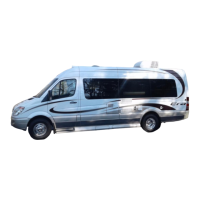
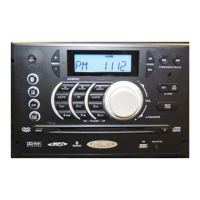
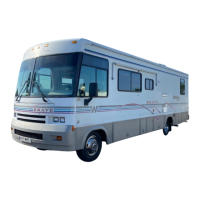
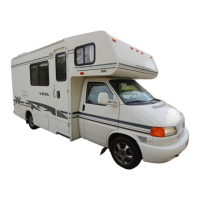
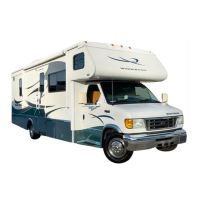

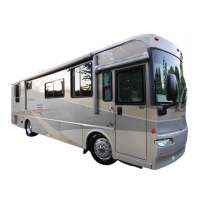
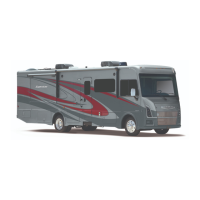


